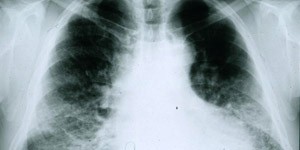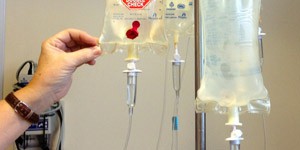By Raquel Peyraube

Dr. Raquel Peyraube is a doctor in medicine and a specialist in the problematic use of drugs. She has trained in psychiatry, toxicology and psychoanalytical psychotherapy and in subjects such as childhood, adolescence and social exclusion. She has 28 years' experience in the field. Throughout her career, she has made contributions in training, prevention, treatment and damage reduction, including innovating theoretical and methodological developments with emphasis on ethical issues. As a former clinical director of ICEERS, she is now an ad hoc consultant of the Uruguayan National Drugs Secretariat giving advice on reform of the public drugs policy and of the Institute of Cannabis Regulation and Control. She is a clinical researcher and a member of research teams for monitoring the law in Uruguay. She sits on several international scientific committees and is an active member of the IACM (International Association for Cannabinoid Medicines). She currently works on the development of clinical trials, medical education on medicinal cannabis, and dissemination of information and advice for reform of drugs policies in various countries.
This year’s ICRS symposium was held in Montreal from 22 to 27 June. Year after year, the number of participants, countries and sponsors at the event continues to grow, reflecting the global scientific and political advance in matters related to cannabis and cannabinoids.
Under conference coordinators Matt Hill, Cecilia Hillard and Jason Schechter, the symposium was staged in a warm atmosphere at the Ballroom of the Centre Sheraton in Montreal. Despite the rain, it was a particularly festive venue, coinciding as it did with the celebrations to mark the 150th anniversary of Canadian confederation.
Like every year, the symposium attracted most of the leading researchers in the field. The event was structured into 11 oral sessions:
- Autoimmunity and Inflammation
- Drug Development and Medicinal Chemistry
- Endocannabinoids, related lipids and cannabinoid receptors
- Pain
- Cannabis Use, Stress and Psychiatry
- Epilepsy
- Feeding, Metabolism and Obesity
- Fear, Anxiety and Posttraumatic Stress Disorder
- Phytocannabinoids
- Human Studies
- Reward & Addiction
Three poster sessions were also staged, basically covering the same themes as the oral sessions.
There has been a remarkable level of research this year and regulars at the symposium could see a clear increase in the quantity, quality and potential applicability of the preclinical and basic research presented. Clinical research was in a minority at the seminar, although it was better represented in both the oral and poster sessions than in previous years. This is, of course, connected to changes in the legal status of cannabis and the subsequent possibility of obtaining the necessary authorisations from the relevant authorities.
Like other years, a number of prizes were awarded. Saoirse O’Sullivan PhD, Associate Professor at the Faculty of Medicine and Health Sciences of the University of Nottingham, UK, won the Young Investigator Award for her presentation on the cardiovascular effects of cannabidiol. Given the growing interest in the use of CBD for a range pathologies in patients of different ages, there is particular interest in determining the cardiovascular effects. Dr O’Sullivan showed that in animal and human arteries, CBD causes acute and time dependent vasorelaxation. An improvement in vasodilatador response has also been reported in a rat model of Type II diabetes. In healthy human volunteers the team has shown that a single dose of CBD decreases resting blood pressure and blood pressure response to stress. In animal models, they have found that the vascular effect of CBD reduces cerebral infarct size. It is therefore of particular interest to be able to carry out studies in humans with different cardiovascular pathologies.
The ICRS Lifetime Achievement Award went this year to Linda Parker of the University of Guelph, Canada. Dr Parker’s paper focused on interactions of cannabinoids and serotonin in the regulation of nausea. There is now considerable evidence to suggest that cannabinoids and manipulations to enhance the functioning of the endocannabinoid system are very promising treatments for nausea. Although the areas of the brain involved in vomiting are known, the same is not true of nausea. In their work with animal models (rats) her team has identified the central site of action for the anti-nausea effects of cannabinoids in the interoceptive insular cortex of the brain. They have shown that elevation of the endocannabinoid 2-AG reduces nausea by preventing a nausea-induced increase in serotonin in that area of the brain. Obviously, an understanding of the mechanism and knowledge of the area involved can lead to the development of better treatments for nausea than those currently available.
Many of the studies presented at the symposium centred on the search for compounds that modulate the endocannabinoid system through their action on CB1 and CB2 receptors. A large number of investigations are also being carried out to extend our understanding of the functioning of the endocannabinoid system at molecular level and the potential toxicity of cannabinoids.
In this regard, studies confirm a growing concern over the toxicity of certain synthetic cannabinoids such as spice (which do not actually function like cannabinoids), among both adults and adolescents. Amongst the latter group — which is precisely the population that uses them most— the toxicity has been shown to be significantly more serious.
There is also relevant and promising research into autoimmunity and inflammation from different causes, including autoimmune encephalomyelitis, uveitis (inflammation of the uvea, the structure of the eye), corneal wounds, idiopathic pulmonary fibrosis and ulcerative colitis.
Pain is a regular topic at every medical cannabis event and this symposium was no exception. In this area, there is now scientific confirmation that cannabis can reduce the need for opiates, with dose reductions of up to 50% even amongst chronic cannabis users. Research also continues to advance our understanding of the mechanisms of action in pain, as well as the development of cannabinoid tolerance and dependency.
FAAH inhibitors have been shown to increase the effectiveness of opiates, allowing a reduction in the dose, and thus mitigating the side effects, tolerance and dependency. Unfortunately, I feel there is still a way to go before this type of molecule can be used with acceptable risk levels for a medicinal drug. Inhibition of the MAGL enzyme might also collaborate in the treatment of neuropathic pain.
In the field of mental health it has been shown that psychosis patients have lower levels of the FAAH enzyme. This explains previous findings showing that in such cases endocannabinoids, particularly anandamide are increased, given that FAAH is responsible for their destruction. Moreover, a correlation has been found between the gravity of the psychosis and the degree of FAAH reduction in the structure of the striatum.
There are a number of studies aimed at identifying the effects and risks of early cannabis use among juveniles, a concern for which until now no definitive evidence has been available. There is an increasing belief that that early initiation can pose a range of risks: dependency, depression and suicidal ideation among others, even in young people with no prior family or individual history of depression. These are topics which will no doubt form the subject of future papers. It is important to clarify these issues in order to ensure that problematic cannabis use is avoided in young people, especially with increasing legalisation around the world.
In the area of treatment for cannabis dependency, the symposium heard a presentation on a randomised clinical study led by a team of researchers from different universities in Australia, comparing the results in terms of withdrawal symptoms of aerobic exercises with stretching exercises among patients with short (one week) inpatient admission. They concluded that aerobic exercise can have a significantly beneficial effect in the treatment of withdrawal symptoms for cannabis (and also other drugs). The authors argue that this is an effective, inexpensive and accessible treatment approach. These results make sense given that exercise activates the endocannabinoid system.
Research into anxiety, fear and PTSD continues. Acute stress has been shown to raise levels of 2-AG, which determines a reduction in anxiety. This mechanism mediated by the CB1 receptors, is also verified with cannabis. It is postulated that some forms of anxiety might be linked to a depletion of 2-AG. Increasing levels of 2-AG or THC might prevent anxiety-caused 2-AG depletion. However, the action of anandamide and 2-AG in anxiety is not entirely clear; moreover, some of the results are contradictory. Nonetheless, it appears that anandamide might have a beneficial effect on extinguishing traumatic memories, which is precisely what is required in PTSD.
The use of THC in very low doses, associated with extinction therapy, has been recommended. The reason for the low doses is that the therapy needs to be conducted with good levels of awareness.
Research on epilepsy was also presented. There is currently a clear move to try to understand the mechanisms of action, which are still not entirely clear. For example, one study presented at the symposium shows that in Dravet syndrome, CBD antagonises the action of the GPR55 receptor, which would lead to a reestablishment of the balance between GABA and glutamate. For its part, GW Pharmaceutical presented its clinical research programme on epilepsy with CBD.
The final sessions at the event presented the results of human studies. Mark Ware brought us the interim results of a study of pharmacovigilance being carried out by the province of Quebec, the Quebec Cannabis Registry, whose first stage was presented at the ICRS Symposium 2016. The study now has 39 physician-collaborators providing data and recruiting patients, of whom there are nearly twelve hundred enrolled to date, aged between 18 and 96, with an average age of 49.1 years. 72% of cases are in treatment with cannabis for pain due to different causes. Observations included a tendency to lower the opiate dose and a reduction in the severity of pain.
A group of researchers from Johns Hopkins and Columbia universities, the Research Triangle Institute and the US Substance Abuse and Mental Health Services Administration, presented a pharmacodynamic study comparing oral, smoked and vapourised cannabis administration. Although the oral route was shown to have a slower onset, the duration of sustained plasma levels is greater than with the other two. Contrary to conventional wisdom, the authors showed that at equal doses the maximum peak of the oral and smoked route were comparable. The most efficient route proved to be vapourising.
The same group also presented a pharmacokinetic study basically reaching the same conclusion. They found a correlation between plasma levels and effects in the different routes, as well as with psychomotor effects, attention and memory, albeit the correlation was lower in the case of the latter than with routes and effects. They report that plasma levels are better predictors of acute effects than levels in saliva.
A group from the University of Colorado presented a study comparing acute response to different varieties of cannabis, concluding that the data strongly suggests that varieties with greater CBD content could mitigate some of the harmful effects of cannabis. They stressed the need to continue and further improve the design of this type of study to provide data for the design of public policy.
And of course there was much, much more. In this short space I have only managed to touch on just a few examples of the lines of work discussed. The next symposium will be held in Leiden, in the Netherlands. If the current rate of growth in research is maintained —and there is every sign that it will increase even further— it will be tough job to write up next year’s report!


